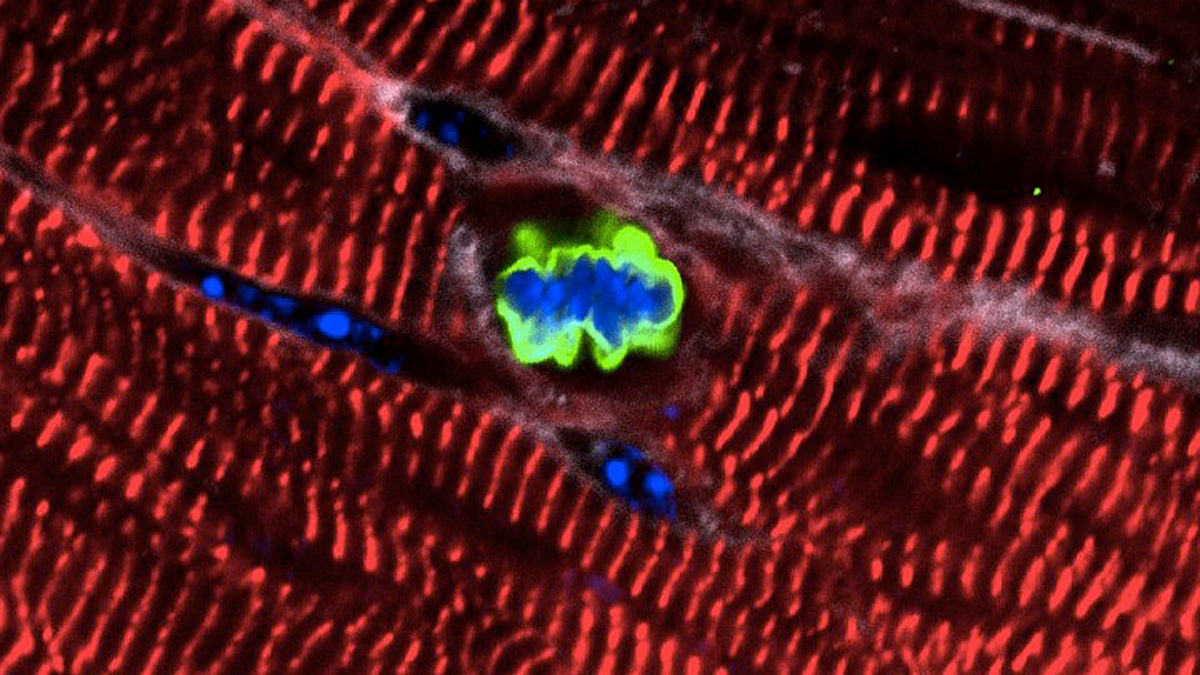Teaching heart cells old tricks, like how to regenerate

An adult heart muscle cell in a mouse re-enters the cell cycle after expression of a cluster of microRNAs. (Image courtesy Lab of Ed Morrisey, Perelman School of Medicine, University of Pennsylvania)
What if you could just grow more heart tissue after suffering a heart attack? It sounds like science fiction, but Philadelphia researchers are learning how to trick cells into doing just that.
In a new study published in the journal Science Translational Medicine, a team of scientists at the University of Pennsylvania and Temple University has successfully regenerated heart muscle in mice using tiny bits of RNA known as microRNAs.
“Their function, basically, is to inhibit expression of other genes,” said Ed Morrisey, the scientific director of Penn’s Institute for Regenerative Medicine. “They do this by binding to other RNA molecules and causing their degradation.”
In this case, the idea is to tamp down the signals that tell mature heart cells not to divide, mimicking the process that occurs when the heart is first forming.
In addition to growing more muscle cells, a seven-day treatment of the microRNAs reduced scarring and improved overall cardiac function in mice that experienced a heart attack.
But more is not always better. After several months of therapy, the mouse hearts had trouble pumping because the cells were too focused on dividing.
“If you do this persistently you really will end up injuring the tissue,” warned Morrisey. “We think you have to give the stimulus for growth in a very short, narrow time window.”
More work is needed to figure out the timing and delivery, and any clinical application is five to 10 years away, he said. One idea is to use a gel that could target the microRNAs to select organs, reducing negative side effects.
WHYY is your source for fact-based, in-depth journalism and information. As a nonprofit organization, we rely on financial support from readers like you. Please give today.

